This article was medically reviewed by Mark Ziats, MD, PhD. Dr. Mark Ziats is an Internal Medicine Physician, Scientist, Entrepreneur, and the Medical Director of xBiotech. With over five years of experience, he specializes in biotechnology, genomics, and medical devices. He earned a Doctor of Medicine degree from Baylor College of Medicine, a Ph.D. in Genetics from the University of Cambridge, and a BS in Biochemistry and Chemistry from Clemson University. He also completed the INNoVATE Program in Biotechnology Entrepreneurship at The Johns Hopkins University - Carey Business School. Dr. Ziats is board certified by the American Board of Internal Medicine.
There are 10 references cited in this article, which can be found at the bottom of the page.
wikiHow marks an article as reader-approved once it receives enough positive feedback. This article has 24 testimonials from our readers, earning it our reader-approved status.
This article has been viewed 1,159,633 times.
If you have yellow or red bumps on your tongue, you could be suffering from a common condition called transient lingual papillitis, which is sometimes also referred to as “lie bumps.”[1] Transient lingual papillitis can present with mild tenderness to severe pain. Despite its prevalence especially among younger women and children, there are few documented cases that doctors have been able to study in great detail, though there is some evidence that it’s related to food allergies.[2] Be aware that hundreds of other diseases may cause red bumps on your tongue, so it is important to follow up with your doctor if they do not clear up after a day or two.
Steps
Treating with Non-Medical Remedies
-
1Gargle with a warm saltwater solution. Swishing a simple saline solution has some antibacterial properties and may help relieve tongue bumps. It can also help decrease any inflammation that may present with the condition.[3]
- Dissolve 1/2 a teaspoon of salt in an 8-oz glass of warm water to make your saline solution.
- Gargle a mouthful of the salt water for 30 seconds and then gently spit it out.
- Swish salt water solution after every meal to remove any debris in your teeth or on your tongue.[4]
- Repeat this for three to four times a day until tongue bumps disappear.
- Do not use saline solution designated for contact lenses as a mouth rinse.
-
2Drink cold or cool liquids. There is some evidence that drinking cool or cold liquids can help soothe tongue bumps and reduce any associated inflammation. You can drink cool or cold beverages as a normal part of your daily hydration routine or as necessary to help relieve your discomfort.[5]
- To keep yourself hydrated, drink at least 9 cups of water a day if you are a woman and 13 cups if you are a man. Persons who are very active and pregnant women need up to 16 cups of water a day.[6]
Advertisement -
3Suck on some ice. Sucking on an ice cube, ice chips, or an ice pop may help provide additional relief from your bumps.[7] The cold may numb pain and reduce any swelling.[8]
- As the ice melts, it can help you stay hydrated and minimize the risk of your tongue drying out, which may exacerbate discomfort from the bumps.
- You can place ice chips or ice cubes directly on the swollen bump surface of your tongue for an easy application of cold.
- Repeat icing as often as necessary.
-
4Eat soothing foods. Some doctors may suggest consuming soothing foods such as yogurt. These can help relieve any pain or discomfort you may have.[9]
- Try and eat foods that are cooled to enhance soothing effects.
- Dairy products such as yogurt, ice cream, and milk may help alleviate your discomfort.[10] Other foods like pudding or popsicles may also help.
-
5Avoid food and products that increase discomfort. Certain foods and products may exacerbate any pain or swelling you have with your tongue bumps. Avoid consuming any substance that may make the pain worse, such as spicy or acidic foods or tobacco.
- Acidic foods and drinks, such as tomatoes, orange juice, sodas and coffee can make you more uncomfortable. Also avoid pepper, chili powder, cinnamon and mint.
- Stay away from cigarettes or chewing tobacco, which can exacerbate your discomfort.
- If you suspect that your tongue bumps are a result of a food allergy, omit this food from your diet to see if it resolves the condition.
-
6Maintain oral health. Brush and floss your oral cavity every day, including after meals. Combined with regular dental checkups, this can help maintain the health of your teeth, tongue, and gums. A clean mouth may also help prevent tongue bumps.
- Make sure to brush and floss after meals if you can. Having debris stuck in your teeth promotes an environment that is rife infection. If you don’t have a toothbrush, chewing a piece of gum can help.[11]
- See you dentist at least twice a year for cleanings and checkups.
-
7
Using Over-the-Counter Treatments
-
1Use throat lozenges or sprays. Throat lozenges or anesthetic sprays that contain local pain relievers may help relieve pain associated with tongue bumps. You can purchase throat lozenges and sprays many pharmacies and large retailers.
- You can use throat lozenges or sprays every two to three hours. If you doctor or the packaging has other suggestions, follow these.[14]
- Keep the throat lozenge until your mouth it has completely dissolved. Don't chew it or swallow it whole, which may numb your throat and could make swallowing difficult.
-
2Rinse with an antiseptic or anaesthetic mouthwash. Gargle an antiseptic or anaesthetic mouthwash that contain benzydamine or chlorhexidine. These can treat infections and may also help relieve pain and swelling.[15]
Seeing Your Doctor and Taking Prescription Medications
-
1Consult your doctor. If you have tongue bumps and home remedies haven’t relieved them, schedule an appointment with your doctor. They can examine you for underlying conditions and help formulate a treatment plan for you.
- Tongue bumps may have related causes including fungal, viral, or bacterial infections or allergies.
- If your tongue bumps don’t go away after a few days or you have recurrent cases of them, see your doctor who can either develop a treatment for you or diagnose an underlying condition, such as a food allergy.[18]
- See your doctor if the bumps grow or spread.[19]
- If your tongue bumps are especially painful or inflamed, or even interfere with your daily activities including eating, it’s best to see your doctor.[20]
- Tongue bumps may also be symptoms of conditions beyond a food allergy including: canker sores, squamous papilloma, syphilis, scarlet fever, or glossitis caused by smoking or infection.[21]
-
2Get tests and a diagnosis. Your doctor may order tests to determine why you have tongue bumps. Tests often may not be able to specifically locate the cause, but your doctor can develop the an effective treatment plan for you.
- Your doctor may use different diagnostic tools to determine the cause of your tongue bumps. She may order oral cultures or allergy tests.[22]
-
3Use medications to treat bumps. Your doctor may prescribe medication or suggest over the counter medications to help alleviate discomfort associated with bumps. Because tongue bumps usually resolve on their own, you’ll likely only receive antibiotics or antiseptics if you have an underlying condition.[23]
- If your tongue is causing you discomfort and is related to a more serious condition like glossodynia, your doctor may prescribe medications like amitriptyline and amisulpride.[24]
- Your doctor may also suggest an over the counter pain reliever, though there is little evidence this help tongue bumps.[25] Popular over-the-counter painkillers include acetaminophen, ibuprofen and aspirin.
References
- ↑ http://www.ncbi.nlm.nih.gov/pubmed/8899785
- ↑ http://www.ncbi.nlm.nih.gov/pubmed/8899785
- ↑ http://dermnetnz.org/site-age-specific/lingual-papillitis.html
- ↑ http://dermnetnz.org/site-age-specific/lingual-papillitis.html
- ↑ http://dermnetnz.org/site-age-specific/lingual-papillitis.html
- ↑ http://www.mayoclinic.org/healthy-lifestyle/nutrition-and-healthy-eating/in-depth/water/art-20044256?pg=2
- ↑ http://dermnetnz.org/site-age-specific/lingual-papillitis.html
- ↑ http://dermnetnz.org/site-age-specific/lingual-papillitis.html
- ↑ http://dermnetnz.org/site-age-specific/lingual-papillitis.html
- ↑ http://dermnetnz.org/site-age-specific/lingual-papillitis.html
- ↑ http://www.ada.org/en/science-research/ada-seal-of-acceptance/product-category-information/chewing-gum
- ↑ http://dermnetnz.org/site-age-specific/lingual-papillitis.html
- ↑ http://dermnetnz.org/site-age-specific/lingual-papillitis.html
- ↑ http://patient.info/doctor/oral-ulceration
- ↑ http://dermnetnz.org/site-age-specific/lingual-papillitis.html
- ↑ http://patient.info/doctor/oral-ulceration
- ↑ http://patient.info/doctor/oral-ulceration
- ↑ http://www.healthline.com/health/dental-and-oral-health/tongue-bumps#Overview1
- ↑ http://www.healthline.com/health/dental-and-oral-health/tongue-bumps#Overview1
- ↑ http://www.healthline.com/health/dental-and-oral-health/tongue-bumps#Overview1
- ↑ http://www.healthline.com/health/dental-and-oral-health/tongue-bumps#Overview1
- ↑ http://dermnetnz.org/site-age-specific/lingual-papillitis.html
- ↑ http://dermnetnz.org/site-age-specific/lingual-papillitis.html
- ↑ http://www.ncbi.nlm.nih.gov/pubmed/15337994
- ↑ http://dermnetnz.org/site-age-specific/lingual-papillitis.html
About This Article
To get rid of bumps on your tongue, try gargling with a warm saltwater solution for 30 seconds 3-4 times daily to help relieve pain and swelling. Gargling and rinsing with an antiseptic mouthwash that contains benzydamine or chlorhexidine can be effective at treating bumps caused by a mouth infection. When you can't gargle saltwater or mouthwash, you can drink cold liquids, suck on ice, and use throat lozenges for relief. For tips on when to see a doctor for treatment, read on!
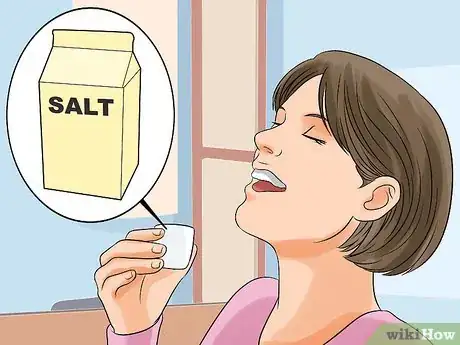
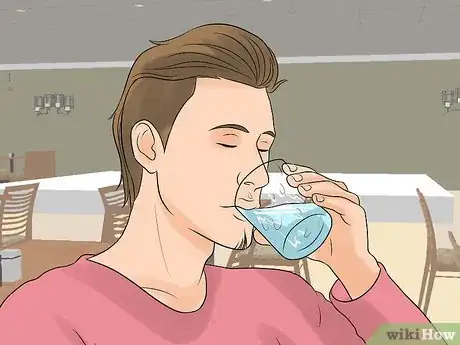

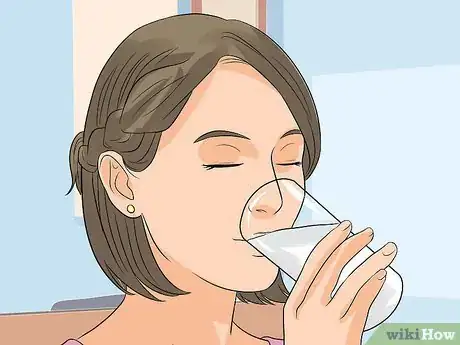

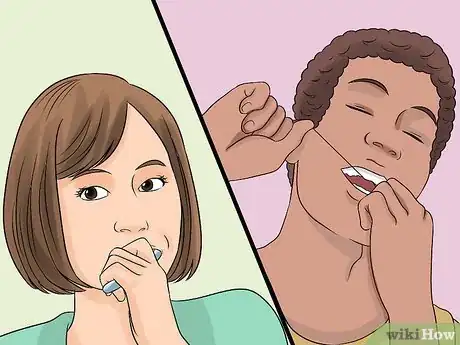
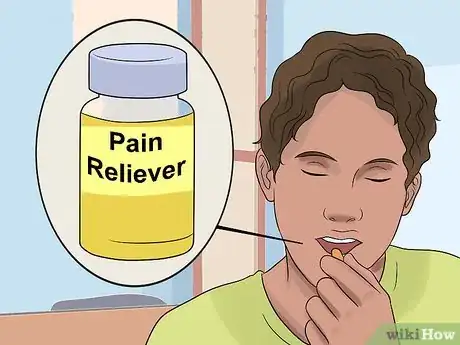
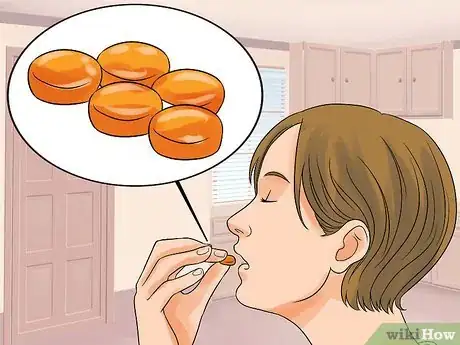
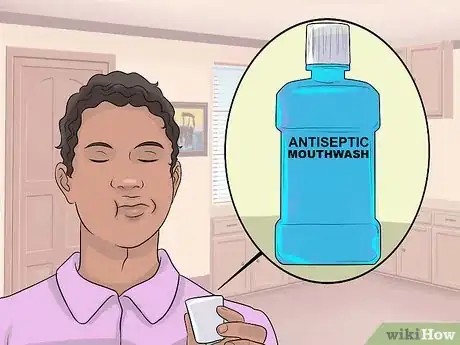
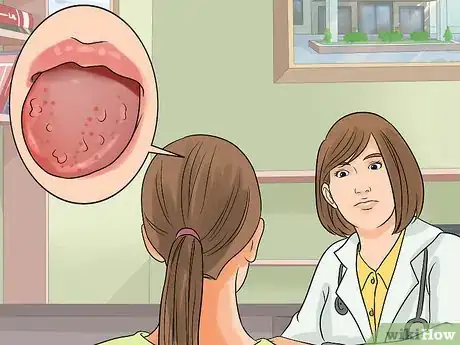
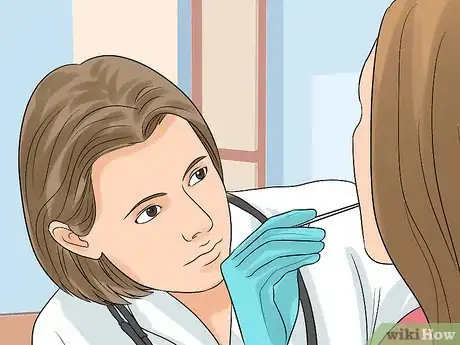


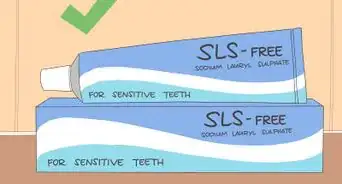
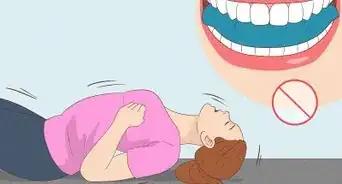

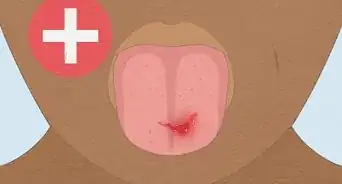
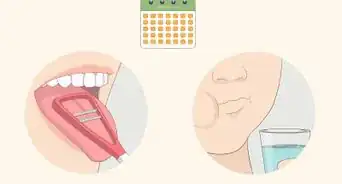


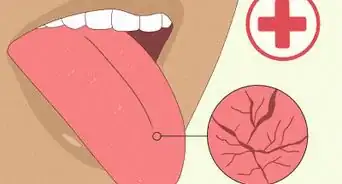
















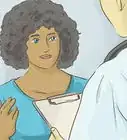
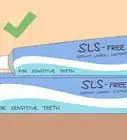





































Medical Disclaimer
The content of this article is not intended to be a substitute for professional medical advice, examination, diagnosis, or treatment. You should always contact your doctor or other qualified healthcare professional before starting, changing, or stopping any kind of health treatment.
Read More...